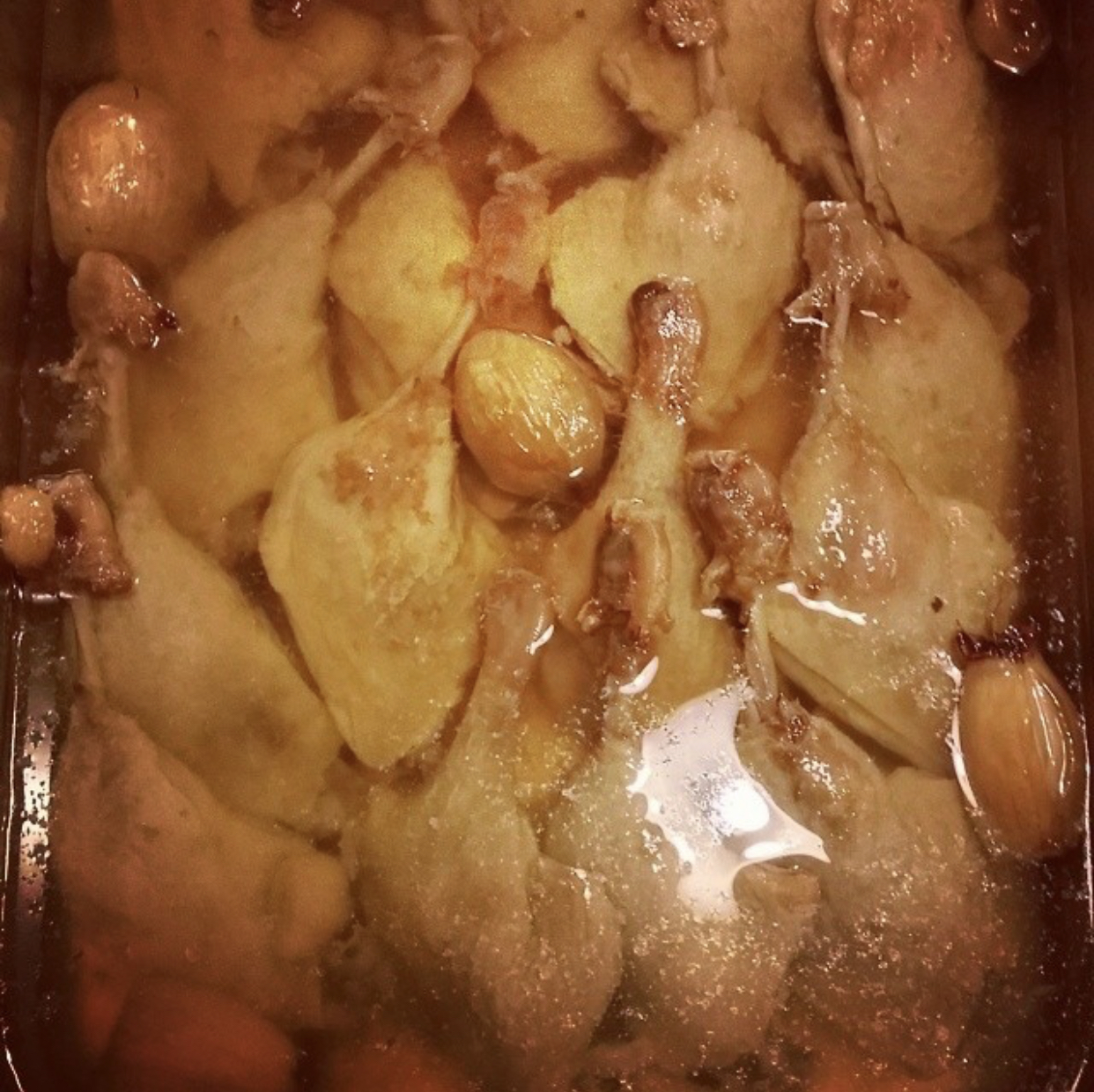Confit duck marylands are a sure-fire winner on a Christmas lunch table, but they can feel intimidating and time-consuming to prepare. While they do take some time, mostly that time is passive (salting, cooking) which allows you to prepare other dishes alongside it, or, you know, pour yourself a glass of sparkling and chill the eff out. The real beauty of confit duck as part of your Christmas feast though, is that you can make it well in advance and it will store in its fat for up to 3 months! Plus, you get to use that amazing fat to roast your potatoes and enrich your gravy, guaranteeing oohs and aahs from your guest and the inevitable question: what have you done to those potatoes!?
Pro-tip: Fat = Flavour. During the cooking process, the addition of herbs and spices to the fat will add complexity to the rich meat, and flavour the fat itself. The longer the fat and duck are stored, the more pronounced those flavours will be. For a Christmassy twist, try adding some cinnamon quills, clove and star anise. To take it into the Tasmanian realm, add pepperberries and lemon leaves. For the more traditional affair, add shallots, garlic, thyme, bay and black peppercorns. Think about what you are serving with the duck, and match some flavours accordingly. don’t be afraid to get creative!
4 duck marylands (leg and thigh) from Matt @ Strellyfield Duck
2 jars of duck fat from same
rock salt
4 cloves of garlic
Plus your chosen spice combo
- Before you go to bed at night, cover the bottom of an appropriately sized deep baking dish with a layer of rock salt. Place the duck marylands skin side down onto the salt, cover and refrigerate for 12 hours.
- In the morning, remove the duck from the salt, rinse briefly and pat dry. Clean your baking dish thoroughly.
- Place the garlic and your desired spice combo into a pan with the duck fat and gently liquefy. In your clean baking dish, place the duck – skin side down – and cover with the liquified fat. Place a sheet of baking paper down onto the fat, and cover the whole tray with foil.
- Place the tray into your oven at 80 degrees C for 8 hours.
- Remove from the oven and allow to cool slightly. From here, you can really get creative with what you want to do with the duck. You could shred it for rillette, you could toss it through pasta with some lemon zest and parsley, or you could turn it into a mix for Chinese duck pancakes! It really is a versatile protein.
- Gently remove the duck from the fat and place it in a storage container, then cover with the fat. Label, date and refrigerate. (if your baking tray fits in the fridge and you don’t need it for a while, simply store the whole affair in the baking tray!)
- When it comes time to serve the duck, simply place your container in some warm water to loosen the fat and allow you to remove the legs. Be careful though, if the fat is still solid you can damage the duck when removing it.
- Preheat your oven to 160 degrees C. Place the duck skin side down into an oven-proof, non-stick pan. On medium heat, crisp the skin. Then place the pan in the oven for 8-10 minutes to warm the duck through.
Et voila. Bon appetite.

